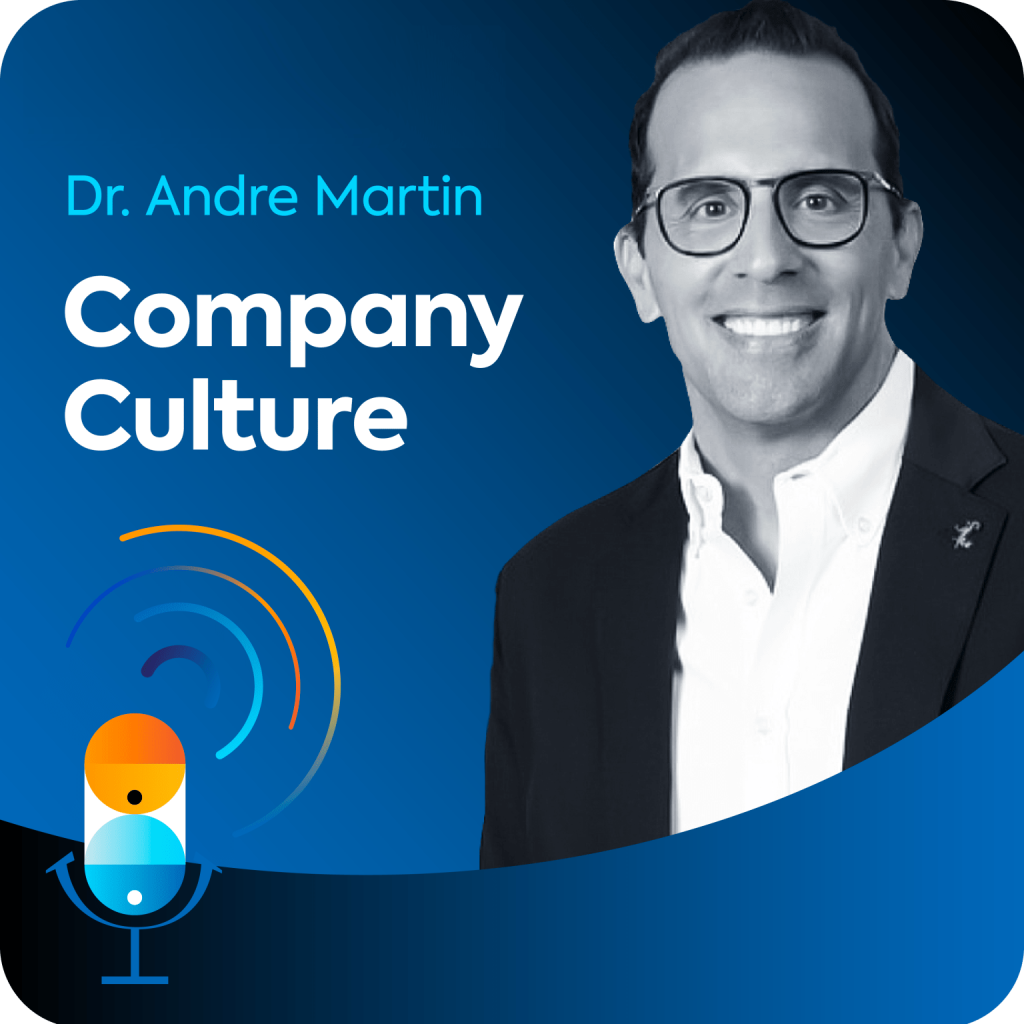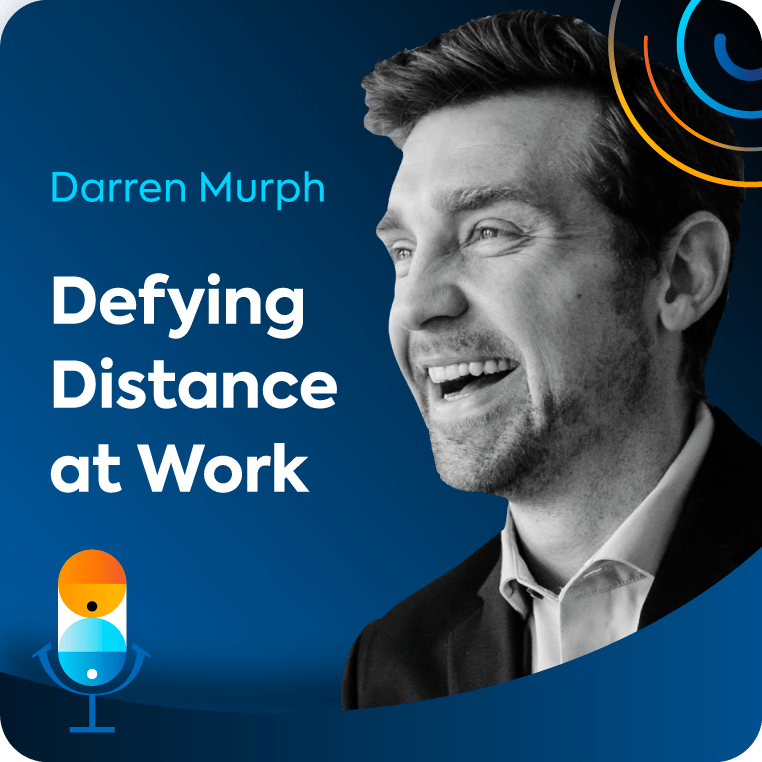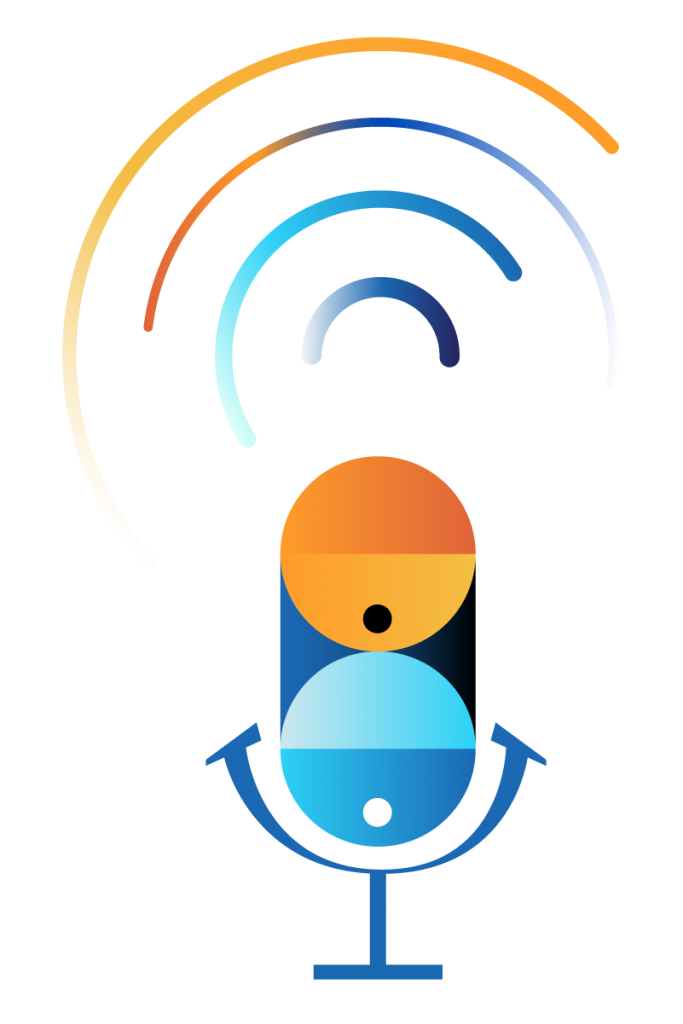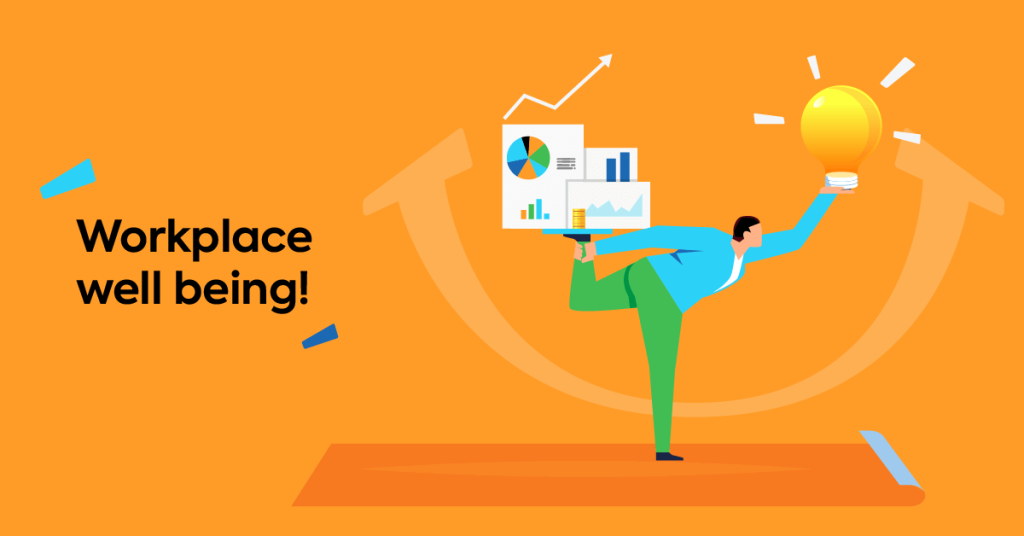Episode 8: Reclaiming Control of Our Digital Lives
Duration: 36min
About our guest:

Amy Blankson
Amy Blankson is the Co-founder and CEO of the Digital Wellness Institute and the bestselling author of The Future of Happiness. A graduate of Harvard and the Yale School of Management, she’s the only person to receive a Point of Light award from two US Presidents.
Amy is also a member of the UN Global Happiness Council, a Fellow of the World Innovation Organization, a featured professor in Oprah’s happiness e-course, and a regular contributor to Forbes. Her current work focuses on how to cultivate happiness and well-being in the digital era.
Share episode
Can we get smarter with the devices we always have with us? And, do workplaces have the responsibility to help their employees become more intentional with the technology they use?
Alongside CEO of the Digital Wellness Institute, Amy Blankson, we’ll cover the simple strategies that can make our tech habits more deliberate and mindful. From balancing our daily work and personal life with our screen time to the apps and tools that can help us regain focus in a world of gratuitous scrolling.
Key takeaways:
Being unhappy with technology isn’t due to the devices themselves. But it’s all about how we use them. We’re responsible for this, and it’s on us to find the power to change our habits for the better. Even in the face of tech and advertising companies’ attempts to capture our attention. Rather than going cold turkey, setting «guardrails» helps guide a more sustainable approach to our digital lives.
To adjust app usage to align with one’s values involves making small, manageable changes rather than drastic ones. This helps in understanding the opportunity cost of excessive app usage and encourages more mindful use of tech.
The overwhelming amount of information people process has drastically increased over decades. And it pushes individuals’ capabilities to the limit. Highly responsible people often overwork themselves by quickly responding to every email and leaving no task unfinished. Even if this means working late and starting early the next day. This intense effort to excel and achieve goals leads to burnout in the workplace.
Workplace strategies for wellbeing are similar to personal ones. But employer involvement there is necessary. Leaders are those who set the work culture. For instance, if a leader emails at midnight expecting a response, they create a culture of overwork. But a leader who encourages downtime sets a healthier precedent. Leader’s actions are the most important in shaping non-toxic workplace cultures.
Organizations should identify areas for improvement to boost employee wellbeing and productivity. Implementing communication charters helps teams align on how to use different technologies for various types of communication. Or provide micro-course training to promote digital wellness.
More episodes we think you’ll love

February 14, 2024 • 34 min.
•
People Management | Learning & Development
Power Skills to Future-proof Your Teams
What are the 3 power skills every professional needs for the future? How do the human skills employees build in their personal lives benefit the workplace? Educational expert and author Dr. Michelle Weise explains how rapid technological innovation is demanding a change in the way we approach learning and work.

January 31, 2024 • 38 min.
•
People Management | Learning & Development
Defining & Decoding Company Culture
What is company culture? Is it ping-pong tables and perks? Is it the values we talk about internally? Or is it the way the company works “on a random Tuesday in October”? With experience at Disney, Nike, and Google, Talent Exec, Andre Martin joins the discussion. Join us and find out why authenticity and intention lie at the heart of a consistent culture.

September 27, 2023 • 30 min.
•
Organizational Design | People Management
Defying Distance with Distributed Teams
We sit down with Darren Murph who’s been preaching the benefits of borderless offices for almost two decades, earning him the moniker ‘Oracle of Remote Work’. Together, we cover everything from the tools that improve async work to how workplace culture is teetering on the verge of a seismic shift. Plus: Darren’s top tips on the traits leaders need to succeed in transitioning to a remote-working future.

Never miss an episode! Get every new drop right in your inbox
Full Episode Transcript
Host: So, hi, Amy. Thank you so much for joining us today. It’s such a pleasure to have you. How are you doing? [00:01:12]
Amy Blankson: I’m doing excellent. So happy to be here. [00:01:55]
Host: It’s, it’s lovely. And I’m really excited that we’re going to get to talk about digital mindfulness you are definitely the expert, and you’ve even written a book called The Future of Happiness.
So I’d love to start you off easy with a kind of a big question. What role do our devices play in our overall happiness? [00:02:00]
Amy Blankson: So I like to say that William Shakespeare was way ahead of his time. He once said that there’s nothing good or bad, but thinking makes it so. And I think that really echoes for me in what I’ve learned from the research about the intersection of happiness and technology.
It is so easy to want to blame our devices for making us less happy. But what I’ve learned through my research is that it’s actually the way that we as humans are using these devices that’s not working for us. And that’s both good and bad news. The bad news is that it’s on us. Right? The good news is that we can get smarter and better about how we’re using devices.
And even when big tech and advertisers are getting more attuned to be able to parse out how to arrest our attention, we are smart individuals. And in that case, it gives us the ability to rethink and strategize how we can really optimize our use of technology. [00:02:20]
Host: So your stance on this is that it’s not so much the tool, but how we choose to use it, apply it, and take advantage of it. Right? [00:03:22]
Amy Blankson: You’ve got it. It’s all about giving intention to our attention. [00:03:32]
Host: Cause you know, like a lot of times, I’ve also caught myself in loved ones paying a lot of attention to how people interact with their phones on social outings. For instance, is it on the table? Is it turned screen down? And even having friends comment, oh, is this a phone party?
When someone brings out their phone. So there’s a lot of anger and shame with how we use our technology outside of work or in social outings. How can we make sure that we’re approaching intentional change in a positive way? [00:03:36]
Amy Blankson: That is such a great question, and I think you hit the nail on the head that we do have a lot of guilt over our use of technology, and I think some of that comes from the media that has told us time and again, this tech is not good for our mental health.
It’s not good for our relationships. It’s not good for interactions. And yet, there’s the side of us that either sees the value of tech or that has to use tech because it’s part of work. It’s part of our interactions, right? And so we’re caught in this catch-22 where we’re not sure how we’re supposed to feel about it, but we’re handcuffed to it in a sense.
And I think that when we step back and look at that, the guilt is not actually that helpful for us. And so, one of the first things I like to do is reassure people that giving yourself permission to use tech well is really helpful actually. It’s just a breath of fresh air. Like, okay. Yes, it’s not bad; it’s just that sometimes we lose track of how long we’ve been on our devices or what we’re doing, and that’s where we need a little bit of help. So what I like to do is start with awareness building, not for the purposes of guilt. But really, for the light bulb to go off and say, okay, here’s where I’m at today.
Here’s where I want to be. And the future of happiness depends on the choices that we make today. If we want the future to look exactly like it does today, we don’t have to do anything. You’re already set up, and we will continue on this trajectory. But if you envision a future where we’re not continually tied to devices, where we’re not going to restaurants, and everybody is looking on their own individual device and not talking, where our young people really get that the benefit of thinking for themselves and interacting where colleagues are more collaborative and connected than ever before, then we probably do need to make a few changes to the way that we’re going about life. [00:04:10]
Host: I also wanted to ask you about some first steps for somebody that is not feeling really present and perhaps a little out of control in regards to their digital life. I know you’re very action-oriented. So, do you have any small tips or exercises even that can help us with that? [00:06:13]
Amy Blankson: I sure do. So when you start to have this awareness that you’re not satisfied with your tech-life balance.
And by that, I mean maybe you feel like your tech is running you. Sometimes, it feels like the tyranny of the urgent, meaning that you wake up in the morning, and it feels like the text messages and the emails and all of the pings start chasing you throughout the day. That’s a feeling that’s actually very common.
We’re all feeling it because the world has become more constantly connected, hyper-connected, always on. So we’re seeing this being reflected in society. So, if you’re getting that inkling. Here’s what I suggest you do. I like to get out a sheet of pen and paper and write down your top five values.
So sometimes, when I ask people to do this, they might say my values are success, or my values are family, or your values are faith, or fun, or travel, saving the environment, whatever it is that you most care about. Write down five values and rank order them. Which one’s most important to you down to the least important.
Then what I like you to do is to make a separate list. And this one is I want you to write down the top five apps that you think that you use the most. So it could be email, it could be your photo camera app. It could be the news or social media app. It could be a game that you like to play, or maybe you’re learning a new language.
So whatever it is, for me, I love to read. So I do a lot of time on the Kindle, right down those five apps. And then, I want you to go beside each of those apps and write down how much time you think you’re spending on each of them. So if you’re tuning in right now, you can do this as we’re talking right now. [00:06:32]
But what I like about this exercise is that it starts with kind of a gut check of thinking, okay, here’s where I’m at. Here’s where I could be. Let’s see how close I actually am. So that’s the third step is going to actually get data. Then, the next step is to go into your phone. If you are on iPhone, it would be going to your settings and to screen time.
If you’re on Android, it’s going into settings for digital wellbeing, and look and see how much time you’re spending on each app. What are your top five, and what’s the time you’re spending perhaps each week on those apps? And what we’re looking for here is if there’s any difference between the things that you most value and the way that you’re spending your time.
For most people, this is going to be a real surprise wake-up call because we don’t often think about this. Some people, they say, oh wow, I surprised myself. I’m really not on devices. If so, you’re doing great. You’re already in control. You’ve got this in the bag, so you could probably just stop listening.
But most people, I think, are gonna be in a place of, wow, I didn’t realize that the average person spends two and a half hours a day on their devices of different apps. That we pick up our phone 150 times a day. And that every time we pick up our phone, that you’re 50 percent more likely to pick it up again in the next two minutes. [00:08:15]
And if you’re in an endless scroll, you’ll spend 50 percent longer scrolling than you ever meant to. So, all of these things have been highly attuned to hijack our attention. So we have to be that much smarter. So here we’re noticing the differences between your values and the amount of time you’re spending.
And then the second step is really going to think through how much time do you want to be spending? And this is where I find that a lot of people look at this list, and they get so frustrated with themselves that they say, okay, that’s it. I’m deleting Facebook from my phone altogether, or I’m swearing off social media.
I’m never looking at the news again. And what we also know from human behavior is that’s normal, but it’s actually not helpful to you. What you actually need to do is to begin to make small incremental changes that create lasting benefit. And so if you’re looking and you say, wow, I’ve really wanted to be spending one hour on Facebook, and I meant to spend 30 minutes, why don’t you reduce your Facebook time by 30 minutes so that you can do something else you really wanted to do for the other 30 minutes.
Maybe it is learning a new language. Maybe it’s hanging out at a friend. Maybe it’s calling a loved one that you meant to call, and you just didn’t make time for. So what we’re doing here is we’re looking at opportunity cost. What are you missing out on by overspending time?
And how could you get that time back to do something that you really want to do? [00:09:35]
Host: You can tell just by how methodical you are, but also how holistic. You’re attacking it head-on. The shame, the values, you’re bringing everything together and tying it in a way that we don’t hear talked about that often. And I’m also really glad that you touched on how we tend to react, where it’s usually that we just stop using technology like cold turkey straight up.
And I do want us to talk about setting boundaries, which is something you slightly touched on. So, in theory, setting boundaries is a good way to start thinking about the problem. But it’s easier said than done. Do you have any ways to ensure that we remain disciplined when it comes to these kind of boundaries that again tie in to our values and what we want to be getting out of our technology usage? [00:11:00]
Amy Blankson: Absolutely. So I did use the word digital boundaries, but I’ve started moving more towards thinking about these ideas as guardrails because I think boundary sounds like you’re in or you’re out. Guardrails help keep you on track. And so I like that terminology a little bit better because what we’re trying to do here is keep ourselves focused and moving in a direction that we want to be going.
And so that becomes very individual. One boundary for one person is not going to work for another person. I know that my children’s idea of guardrails is very different from mine, and mine is very different from my mother’s, right? But what we’re trying to get out of those outcomes is also different. So you got to think about for yourself.
Okay. So I want to write a book. So, I want to put guardrails around my early morning hours when I do my best writing and thinking. And so one of the things that’s really helpful to me is to use a focus keeper timer, like the old Pomodoro timer. There’s great apps that are very simple, and all it does is count down from 25 minutes of focus time so that you stay focused. For me, having that accountability and a designated time is the guardrail I need for my goal. [00:11:52]
I think we find as families that sometimes it helps to have conversations around group goals as well. So, if we want to create a certain work culture or a family culture, or a friend culture, you might need to talk about some of these guardrails with a group of people. So let’s just talk about a group of friends, right?
If you want to have more face time and deeper conversations together, you need to find agreement to say, hey, you know, really wanted to be more intentional in our relationship. What if the next time we got to dinner, we all decide to, like, just do 30 minutes without our devices or an hour without our devices.
It’s just a device-free dinner. This one time. That will not happen unless everybody agrees to it because the moment that one person pulls out their phone, everyone else will pull out their phone, too. So, by talking about it in advance and making intentional choices and communicating them, that’s where you get the stickiness.
So a lot of times, we’ll set these internal boundaries for ourselves, and we forget to tell other people, and we just assume that they can read our mind that this is something we’re trying to do. And let me tell you, nobody has any idea what you’re thinking. [00:13:09]
Host: That’s amazing because it really all boils down to communication at the end of the day and how open you are.
One of the key things that’s widely accepted nowadays is that devices make it hard for people to concentrate. Can you talk to us a little bit about why that is? [00:14:23]
Amy Blankson: Yes. So, in order to regain control back of our focus on devices, we have to understand what it is about the devices that is so good at distracting us.
NASA has been researching the science of distraction for decades now. And what they found was that initially there were messages that mission control needed to get up to the astronauts in space that were life or death situations. And so they needed a way to communicate. So initially, they started to create a printout, or maybe they began to change the color of messages on the screen to the astronaut.
So instead of black, it would be red if it was really urgent. And then they wanted to make sure that they heard it. So they added a beep, and then they began to add flashing lights. And then, they began to add images. And you can see where I’m going with this is that all of this research into what is so effective at capturing people’s attention is what is taught today to every advertiser on the internet.
And so what we have now is millions of individuals who are exceptionally good at distracting. We all have the tools in our hands. Now, the question is, if those individuals are so good at it, we have to be that much better at counterbalancing these strategies. So what is it that we can do about it? And so, some of the things that I find to be most effective are to reverse what has been used to distract us. [00:14:40]
So it turns out that you can actually set your phone to grayscale. It is one of the fastest ways to make your phone uninteresting. I challenge you to try this because I tried it myself in the course of writing my book, and I found that every time I picked up my phone, I thought, this is so ugly, right? I don’t even want to look at this because it’s not exciting.
Another strategy is to use apps that have been designed to help fight fire with fire. So there’s an app called Opal that will help you block apps after a certain amount of time usage, sort of like screen time, but it actually locks you out. So you can’t go back into the app. There’s just no breaking through that barrier.
So these are just little tips and strategies that you can use from positive psychology to help us make better choices. [00:16:06]
Host: I really want to ask you about workplaces specifically, because we spend a lot of our time at our work. And obviously, it’s very important for there to be a culture where employees can practice digital mindfulness.
Are there any simple things workplaces can do to encourage this? [00:16:55]
Amy Blankson: Oh, there’s so many, and I’m passionate about this topic because I think a lot of times young people, especially teenagers, get a bad rap for being bad with their technology, and all the strategies and attention are focused on them. But when I’m in the workplace, most often, the greatest challenges with those individuals who are hyper-responsible.
They are trying to answer every email as fast as possible. They’re trying to be the first one to respond. They want to make sure that no stone is unturned, even if that means working late into the evening hours and waking up extra early to get ahead for the next day. And so the challenge there, is that we are trying so hard to be good, to do what’s right, to be better, to reach goals.
And what we’re finding in the workplace is a massive amount of burnout because what we’re asking our brains to do is humanly not possible. The volume of information that we’re processing has doubled many times over in just the past 30 years. So we’re getting more messages. We’re working longer hours.
We’re on screens more. We’re sitting, and our backs are tired. All of these things are emerging in society. And one of the stats that I found that was really staggering for me was that since the pandemic started in 2020, the amount of time we’re spending on devices for work has gone up by 30%. And we all thought that would go away when we were not doing full-on remote work anymore, things would go back to normal. [00:17:15]
In fact, it stayed steady. We began to lean more into hybrid and flexible work. which meant we’re working around the clock because of different time zones and odd hours because of caring for other people in our lives. And so here we are, and we’re working more than ever, and we’re tired. And so, in the workplace, the strategies are actually not too different from the individual strategies, but they do require what I call a duty of care for an employer, which is that they carry this responsibility to start the conversation in the workplace.
And in particular, leaders have the ability to shape the culture that trickles down from their behaviors. So if you have a leader who is the person emailing at midnight on Saturday night, expecting a response, you’re going to have a culture where everybody follows suit. Whereas if you have a leader who says, you know what, it’s five o’clock on Friday, please go take the weekend. Recharge.
I’ll see you on Monday morning. It’s that’s a very different precedent. So leaders play a really important role here. I think the modeling behavior is one thing. The second would be again, starting with measuring digital wellness in the workplace. And we oftentimes say that if you treasure it, you have to measure it. And this is where I think workplaces are actually behind the eight ball on this topic. Because right now, we have usually an annual engagement survey in the workplace, and on this annual engagement survey, there’s usually one question related to mental health. And if your organization is really on it, you might have a quarterly pulse survey for mental health, in which case there may or may not be one question related to technology use. [00:18:50]
But when we’re looking at this, the dynamic where our screen time has increased by 30 percent in the workplace, we’re talking about a 30 percent shift in workplace behavior, which is massive. It impacts our sleep, our productivity, our errors, our ability to communicate, our connection to other employees, our sense of fulfillment at work.
All of these things are being impacted, and it’s not just a wellness issue at that point; it’s actually a business and strategic imperative because you’re going to burn out your workforce, cause attrition, have to rehire, you’re having trouble recruiting top talent, and we’re not measuring this, which is insane to me, but this is the dynamic that happens in the workplace is that to get one question added to an engagement survey may take two years.
So we’re falling behind on the measurements front. And it’s part of why at the Digital Wellness Institute, we’ve really leaned heavily into helping organizations to begin doing measurement with a survey that hyper-focuses on tech and happiness in the workplace because the questions aren’t being asked. [00:20:34]
And the kind of questions we focus on are things like, do you feel like you can unplug when you’re on? A PTO or on vacation. Do you feel like you are always on or that you always have to have a device with you? Do you feel like you have to be responsive around the clock? Do you feel like that your leader is modeling these behaviors?
Do you have resources to teach you how to be more productive in the workplace and how to deal with distractions? Is anyone helping you think through this? Because our research found that 83 percent of employees are turning to their employers, wanting help navigating tech-life balance. And 89 percent of employers have no idea what to do because they’re struggling, too. [00:21:38]
Host: I do want to ask you very quickly, what do you do afterwards? After you find that data, and you give them the information that, hey, 98 percent of your employers, your managers don’t know what to do. [00:22:21]
Amy Blankson: Absolutely. And I think this is a crucial part that a lot of organizations miss because there are organizations out there who measure and organizations out there who train, but we’re not connecting the dots.
And I think that it is way more effective and resource-efficient to do both together in the same breath. Right? So, measure and understand for your organization where are the pressure points that you could most easily address and get the biggest ROI for your employees. And then go change it. So, the way that we’re changing it differs depending on what your needs are for your organization.
But a couple of the strategies might range from things like micro course training, which we’ve heard a lot about. Very simple beginning strategies to start the conversation and your organization and get two to three things that you can do, specifically to raise your baseline for digital wellness as a culture.
So, how do you find the sweet spot between tech and life and happiness and productivity? We call that digital flourishing. And there’s eight different domains in which we feel like organizations can help employees to flourish, from productivity, your environment, the way you communicate your relationships, mental health, physical health, tech-enabled services, and digital citizenship. [00:22:34]
One of the case studies that we ran was with ATB Financial in Canada. And we went in, we did a pre and a post-test, and we ran four weeks of running one 15-minute micro course each week. So in total, this initiative took an hour and a half of employee time over the course of six weeks. At the end of the six weeks, we measured that individuals were reporting feeling the pressure to be always on had decreased by 52 percent.
The feeling that you could actually take time to create digital boundaries went down by 50 percent. The feeling that you could take a vacation and not have to be responsive went down by 48 percent. People were reporting a 30-minute voluntary decrease in their distraction at work. So this is not their employer saying, quit looking at YouTube.
This is a personal choice. that they wanted to cut down because they wanted to be more effective. And we looked at those numbers and we thought, wow, that’s actually better than we actually ever anticipated. What happened? What we found was that the courses and the strategies were crucial, but even more so was the permission to have a conversation that people had been feeling for a long time but hadn’t had an outlet to discuss.
And so, by the employer raising this conversation, people felt supported. And as a result of that, they were able to take action to solve for it. That then has helped with the outcomes. And so that was a real learning lesson for us at this permission conversation comes full circle again, that it’s so crucial to employees feeling like their voices can and will be heard by the leaders in the organization. [00:23:55]
The other strategy is going in and helping with what we call communication charters. And this is perhaps one of the most effective strategies I’ve seen put into place with organizations where you’ll take a small team, individuals who work together on a regular basis, and you have them align around what kind of technology they want to use for what kind of communication.
Do you text for urgent messages, or do you call? Do you use Slack or do you use email for documentation? And what we found is that the average organization has five different communication streams that individuals are trying to navigate, which do I use for what? And what happens is that the research shows that depending on your age, your gender, your geography, and your industry, it can actually change the way that you feel like you should communicate and what it means to be responsive.
And so, as an example, if you are a young man in your 20s in financial services in New York, you have an average expected response time of 15 minutes to your messages. You have to either respond, or people get back to you in 15 minutes. That’s being responsive. And you prefer to operate over Slack or text if it’s really urgent. [00:25:36]
And so imagine what happens if you put that gentleman on a team with a woman from the Midwest. And she is a nonprofit management, and she’s in her 50s, and she prefers to use email and phone calls. And so when the gentleman from New York texts her and says, hey, I haven’t heard back from you. And she says, I just got your email, and I’ll get back to you later this week.
And she calls him back, and he says, why are you calling me? This is what’s happening with these generational shifts in the workplace all the time. So we’ve got to realign on how are we going to communicate so that we don’t have that frustration and rub because both individuals think they’re being responsive and their minds they are, but that’s not a common definition. [00:26:56]
Host: That’s honestly the picture you just painted just caused me a little bit of anxiety. I personally have it as a rule every time I enter a new team, the first thing I do after I introduce myself is, great, how do you want to be communicated with? What works best for you? I also want to talk about, as work starts to become more asynchronous, you also mentioned this before, especially after COVID, and for many people, it’s also becoming more autonomous.
Our tasks can be spread quite dramatically. So, what are some tools and practices you found that help people simplify these processes? Or if you have any strategies that you would recommend? [00:27:40]
Amy Blankson: Oh, surely. So, when we’re trying to manage our tasks autonomously and asynchronously, one of the key strategies is to have a system for how you manage and how you communicate that you have managed. Some of the chaos that comes with communication is when you are doing your tasks, and no one else knows that you’re doing them. So it helps your teammates to see you check things off, see updates, see status, see deadlines. That’s really helpful.
So, I find a lot of workplaces have turned to project management systems like Trello, Asana, monday.com, to manage tasks. But I also find that sometimes those tools are generational tools as well. And that some of the individuals I work with also have are not neurotypical, which means that you have different systems like post-it notes, which are far more effective than any of these project management systems. [00:28:21]
Host: Finally! Someone who’s speaking my truth because everybody looks at me weird. [00:29:24]
Amy Blankson: Are you a post-it noter? [00:29:28]
Host: I’m a post-it noter, and I am a color coder as well. So not only do I have post-its and they’re a specific kind of post-it. But they’re also different colors for different things. So sorry. I just had to jump in there because everybody thinks I’m crazy. [00:29:31]
Amy Blankson: Nope, I’ve got my post-it notes right here. I have a sophisticated tool, and yet the most efficient part of my system is the post-it note on the computer, right? People say, tell me all the time, Amy, I like to keep my tasks online and I like to handwrite them as well because there’s something about writing by hand that helps you remember the task or be more intentional about it.
So there is that, but I also think that the group think dynamic and the ability to communicate. This strategy is really important because it’s not always easy to take a photo of all of our posted notes on our desk, right? That doesn’t work for everyone else on the team. So, how you work for yourself might be different for a team, and you might have to duplicate in order to make sure that everyone’s on the same page there.
The other thing is that we find that individuals have different times of day that they are most efficient. And so finding that time of the day, that is your sweet spot for working front-loading the tasks that are hardest for you during that time, doing the easier tasks when you get mentally tired. So, for me, that’s the afternoon I save all of my rote tasks for the afternoon, and I try to give myself more breaks, but in the morning, I’m locked in, I’m focused, and this is my me time. So, finding those moments for you. It’s crucial. [00:29:47]
Host: That’s really helpful. Thank you. I do want to talk about the future, and everybody now is talking about AI and with it being on the verge of entering all aspects of our lives, honestly, I think it already has. How can individuals and organizations hold the two concepts of digital transformation and digital mindfulness together at once? [00:31:11]
Amy Blankson: Well, I think the first thing is putting them into the same hand. So we often have AI over here, and we have wellness over here, and the two never meet and their paths. We talk about them separately. And what happened is that AI becomes part of company strategy, and people are over here feeling threatened by potential job loss, uncertainty, paralyzed by fear.
And so one of the strategies I think is really helpful for organizations is to fuse the conversations together. Make your people part of your AI conversation, train them up in AI so that it doesn’t seem scary because they’ve actually had the opportunity to use it and see the value of it. And I also think that this is the opportunity where we talked earlier about how the future of happiness depends on the choices we make today. [00:31:35]
If we do not put guardrails on AI usage and we’re leaning all in, I think we will set ourselves up for failure. This is an opportunity for us to do this right and set the future up well so that we are using AI ethically, thoughtfully, that we’re thinking about the unintended consequences, and we’re planning for them along with contingencies.
So rounding out the conversation with more involvement, not less involvement, getting people involved in learning about AI, because it’s less scary. And also, I think that if you are one of those individuals tuning in and you are worried about AI replacing your job, my best recommendation for you is to double down on learning more about AI instead of shying away from it.
Take a class, start playing with it, explore what it can do, because that’s, if your job really is on the line for something that’s going to get replaced, you need to be able to get ahead of that. And the way we do that is by skill building right now. I’ve seen this time and again, with the science of happiness, that the human psyche goes in these cycles of fear every time there’s a new technology.
And believe it or not, there was the same sort of response to the fear of technology when the computer came out, when the radio came out, when the television came out, when the printing press came out, people thought that once people started printing books, the oral traditions would die off. And, of course, now we look back at that, and we think how ridiculous no books have actually made it more possible for people to learn in different ways, but initially, there’s always that fear.
What do we do to channel that fear and make it useful so that we can create things in the future as a society that are actually making the world better? [00:32:28]
Host: I’m really glad that you’re happy to face any challenge, even things that really scare most people. One final question, seeing as we’re all about keeping it simple on this podcast, in one sentence, what is your most important piece of advice to somebody who might be experiencing digital overload? [00:34:20]
Amy Blankson: I would come back to that, give intention to your attention. I think in the spirit of keeping it simple, that’s the starting place. [00:34:42]
Host: Give intention to your attention. Amazing. Amy, thank you so much for taking the time to talk to us. We really appreciate it, and thank you for sharing your optimism with us. I think it’s something everybody needs, and this has just been so lovely. Thank you. [00:34:49]
Amy Blankson: Thank you so much for having me. [00:35:08]
Host: Thanks for tuning in. On the next episode of Keep It Simple, we’re talking to Andre Martin about the myths surrounding workplace culture and how hiring for the right fit is more important than you think. This episode of Keep It Simple was brought to you by TalentLMS, the training platform built for success and designed with simplicity in mind. For further resources on today’s topic, visit talentlms.com/podcast.[00:35:16]

Train your people. Measure results. Drive growth.
TalentLMS gives you the tools to supercharge every step of your training.





